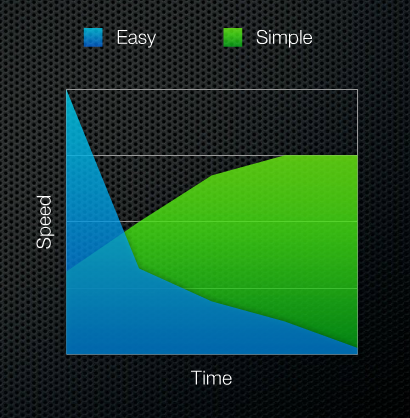What Can the iPad Teach Us About Software Engineering?
Software engineering is interesting. You see, first computer science sprouted out of math as a way to solve a bunch of problems that were previously computationally infeasible. As we stretched the limits of computation more and more, though, we started to run into problems with these large systems we had created. So, reluctantly, the mathematicians turned to those smug know-it-alls, the engineers.
But software is inherently a completely different ballgame. That it’s all virtual has a number of implications; the one I want to talk about today is maintenance.
See, most traditional engineering projects go through a predictable (and sensible) lifespan - they’re designed, they’re built, they’re used, they’re retired. We’ve tried doing this with software, but the problem is that, due to its unique nature, we can continue modifying it after its built, oftentimes while people are still using it! Can you imagine the foundation of your office building being replaced while you’re still in it? Frightening! But since we have the capability to do this with software, we must - if our relentless desire to craft a better product doesn’t do it, the features and fixes our managers and clients request will.
This shift to flexible long-term thinking requires a fundamental shift in how we view construction. Let’s look at a real-world parallel for a moment.
The iPad 3
There’s been a slight bit of drama over Apple’s latest tablet; while we at iFixit aren’t too thrilled about the over-reliance on glue, some are arguing it leads to a better product for consumers.
Fresh out of the assembly line, this is true. Not only does the lack of fastening tabs make a slightly thinner product, but it is likely easier for Apple to produce, theoretically leading to lower prices.
But this is an extremely short-term view. When the battery starts losing life, you’ll be hard-pressed to replace it. Wanted to pass on your old device to your kid? Sorry, bud, but this is a consumable device.
Software is Not Consumable
Software lasts a very, very long time, and some poor sod is going to have to maintain it. Not only is it discourteous to program with a consumable-based mental model, it’s bad business sense.
Rich Hickey, in his talk Simple Made Easy, presented a graph of development speed on a project when following the “easiest” method vs. designing for simplicity.

Now, this graph is completely made up, but it represents his experience, and it seems not uncommon for others to agree with it.
Where does this leave us? We have to take our engineering lessons with a bit of skepticism - will this actually work for us?
And for chrissake, don’t glue your programs together.
